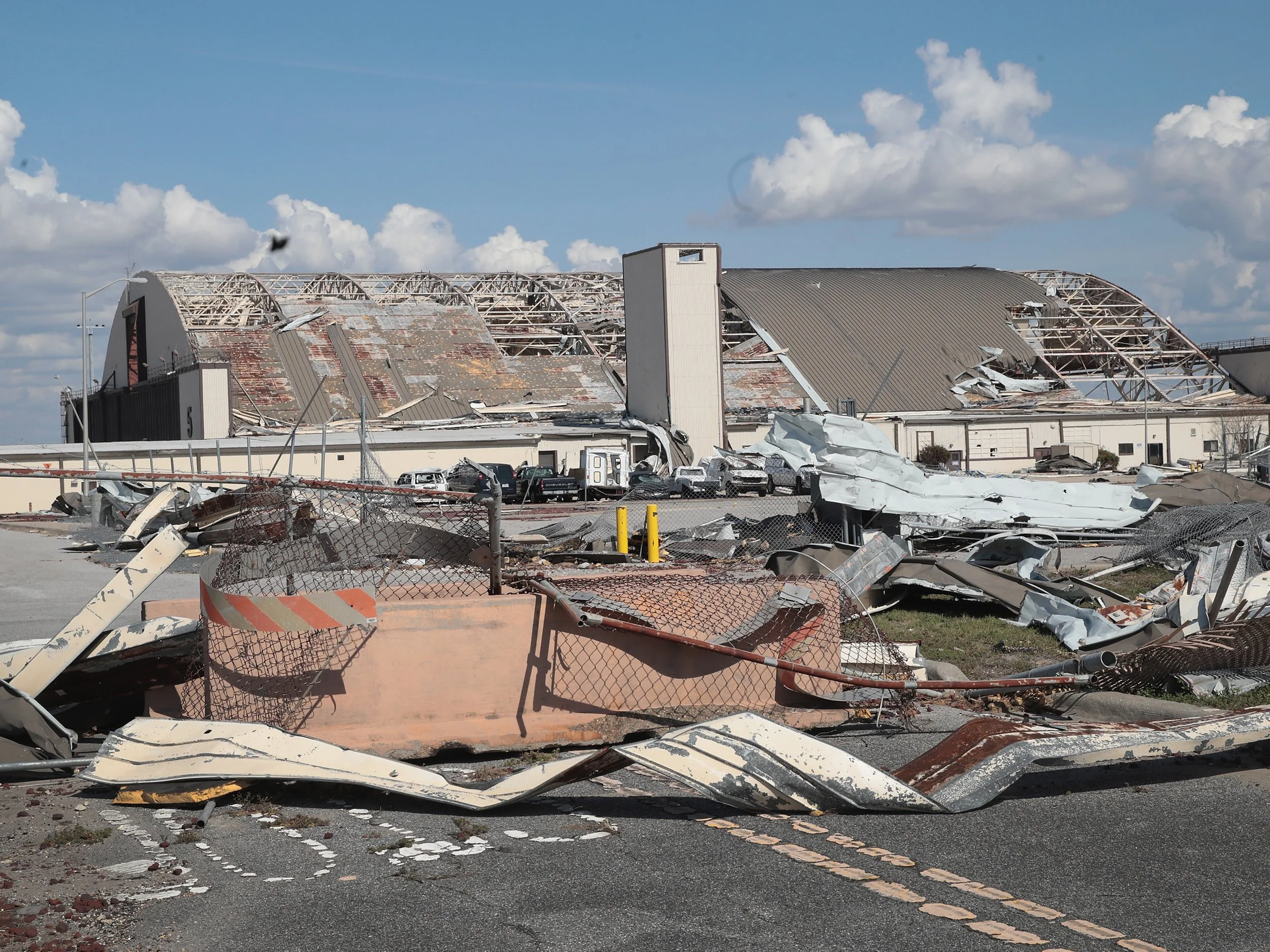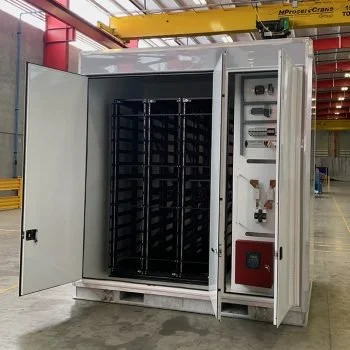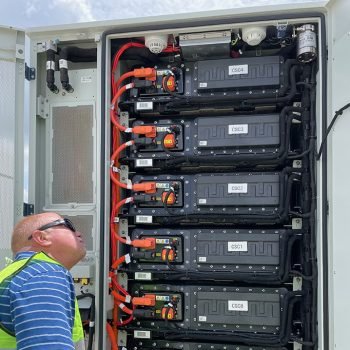Case Study: Florida Air Force Base Microgrid
Custom battery storage protection that’s ready for anything
Project Highlights
mph wind speed resistance
in assets protected
annual MWh demand
01. Problem
A microgrid provides crucial backup power to one of the most important military bases in the United States, but the site has a history of extreme weather that poses a serious threat to infrastructure.
02. Objective
Develop a battery energy storage system to ensure battery functionality during even the harshest weather events.
03. Solution
A reproduceable, custom-built and installed network of NEMA 3R battery enclosures and ductworks.
04. Result
The base’s power supply to several mission-critical facilities is protected, along with the readiness of its Air Force servicemen. The microgrid can also send power into the larger grid during normal conditions.
Background
In 2018, the base suffered an estimated $4.7 billion in damages from the Category-5 Hurricane Michael. Power lines were downed, power was knocked out for days, and nearly 500 buildings were destroyed.
In the aftermath, the Air Force announced a nearly $5 billion rebuild project to make the base an “installation of the future,” complete with its own microgrid that includes a 150-kilowatt (kW) solar array and 450 kW, 2.5-hour battery. The project would be completed in partnership with the local utility.
To achieve the desired power resilience, they needed to know the installation could withstand hurricane-force winds, high summer heat levels, and the region’s 60 inches of rainfall per year.
The experts turned to EnQuest for help.
EnQuest’s Answer
Our response was to design and install customized battery enclosures and a cooling system with corresponding ductworks. These would be built in our shop in any required number, shipped to the site, and installed, while maintaining the possibility for the microgrid to be expanded at any time in the future. In fact, in the ultimate streamlined solution, our enclosures are able to be shipped with the batteries already housed inside, with no need for a concrete pad on-site!
We conducted a thorough structural finite element analysis to ensure the installation could withstand hurricane force winds up to 165 mph. (In the process, we ensured our enclosures can withstand earthquakes, as well, for our West Coast customers.)
The custom cooling system was included to mitigate the high temperatures caused by the batteries discharging, which can damage the unit and even create a fire hazard. To ensure the proper air flow, we performed a computational fluid dynamics (CFD) analysis as part of our design process. We also collaborated with third-party consultants to guarantee compliance with rigorous fire, UL, and site standards.
During manufacturing, we developed new construction techniques to fabricate composite enclosure walls of carbon fiberglass, aluminum, sheet metal, and/or insulation, and performed extensive tooling of needed fixtures, jigs, and more.
Reporting for Duty
The new microgrid will deliver both emergency backup power and redundant power that can be added to the larger grid.
And thanks to the microgrid’s NEMA 3R battery enclosures, despite lying in the most hurricane-prone region of the most hurricane-prone state in the country, the Air Force Base will never again go completely dark due to power loss.
If and when the Air Force and the utility opt to expand the microgrid, EnQuest will be ready to provide more custom enclosures mass produced to the same high standards.









